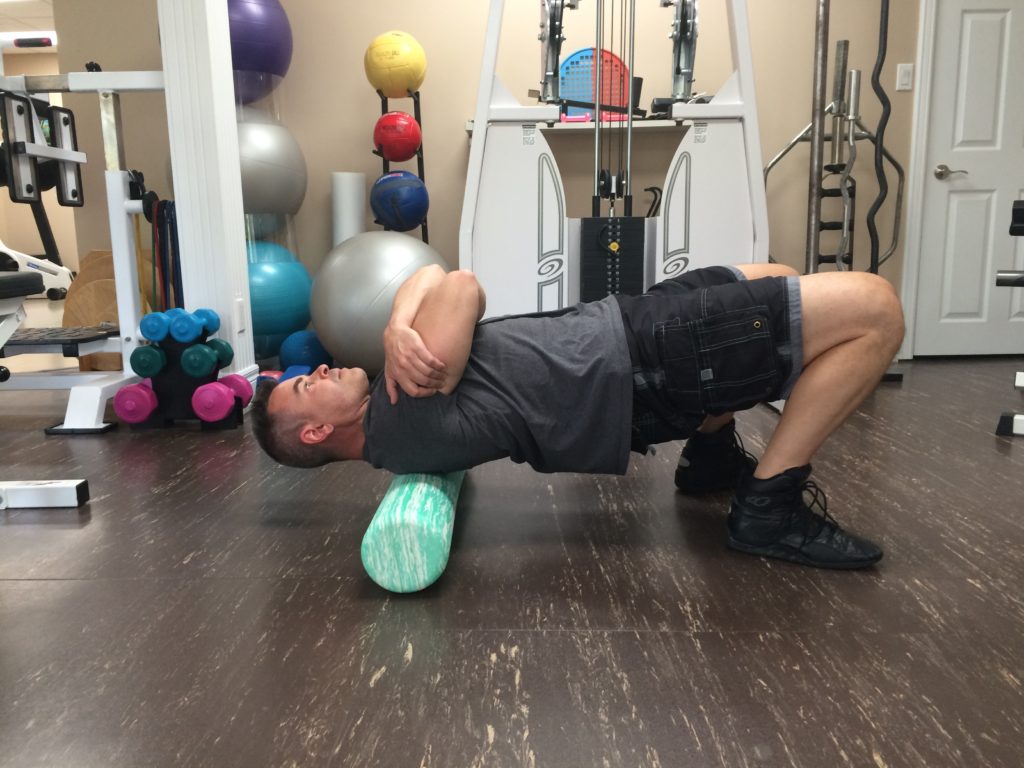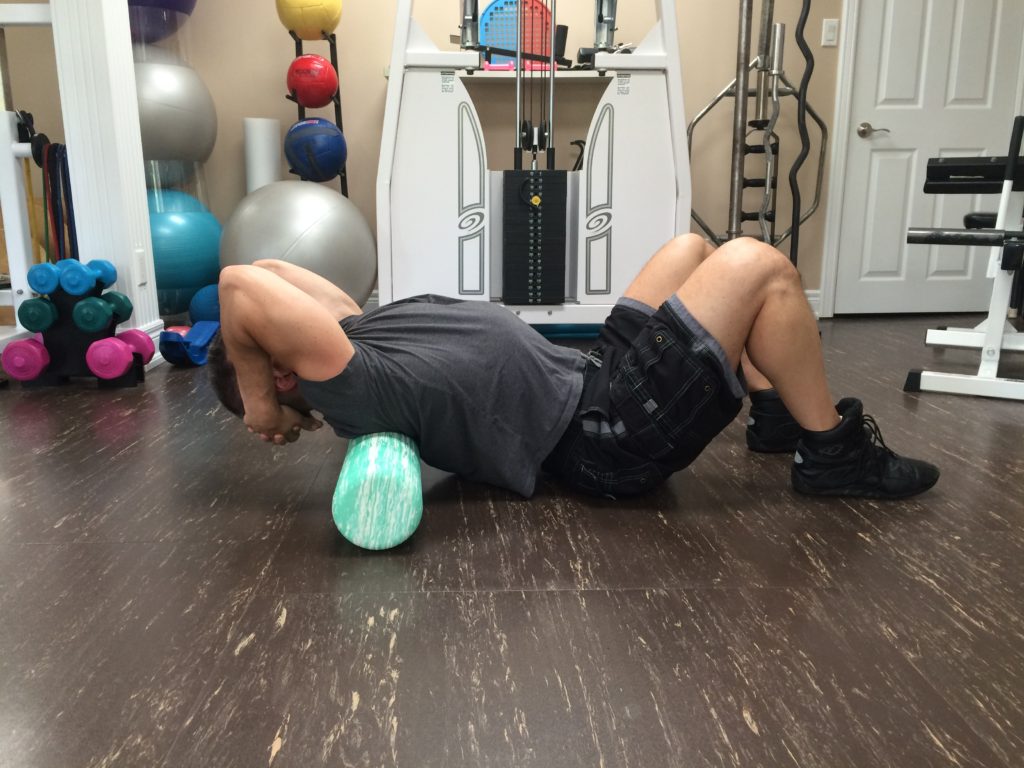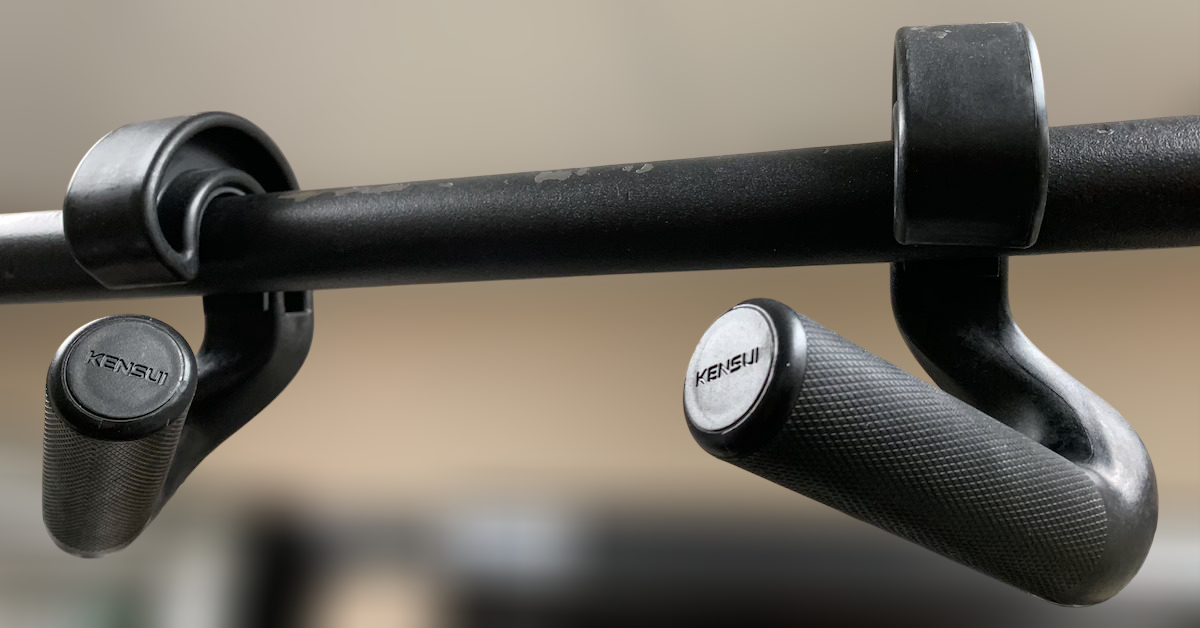Many personal trainers recommend foam rolling the entire body before a workout. That’s not only unnecessary—it can actually be counterproductive.
Instead, adjust muscle tone accordingly: find tight tissue and release it, and vice versa.
👉 For more on this approach, check out Foam Rolling and Pain.
Generally, rolling just two key areas is enough for most people—and the upper back is one of those areas.
Step 1: Roll the Upper Back
Start by rolling the tissue.
To do this:
- Lie supine with the foam roller positioned in the middle of your back.
- Roll upward toward the armpits, then reverse direction when you reach the top.
- Hug yourself to move the scapulae out of the way—this improves contact with the thoracic spine.
- Perform about 10 slow passes.

Step 2: Perform Thoracic Extensions
Next, transition into thoracic extensions:
- From the rolling position, drop your butt to the floor.
- Interlock your fingers behind your head and pull the elbows together.
- Extend backward—push your head toward the floor and lift your chest up.
- Pause at the bottom of the movement.
- Do 2–3 reps, then move the roller up one vertebra and repeat.

This simple method can help normalize excessive kyphosis (aka “hunchback” posture) and improve thoracic mobility. Your shoulders will thank you—better posture means better mechanics and less wear and tear on the joints.
👉 Learn more about proper foam rolling technique in my book The Warm-Up: Modern Methods for Strength Training.

The Warm-Up: Modern Methods for Strength Training
Stop wasting energy on outdated warm-ups that do more harm than good. The Warm-Up reveals modern, research-backed methods to prime your body for strength, boost performance, and reduce injury risk—all in less time than traditional routines.

Upgrade Your Pull-Ups with Swissies-SP Handles
Pull-ups are one of the best exercises for building back and arm strength—but not all pull-up bars are created equal.

No Time to Walk After a Meal? Do This Instead!
By now, most people know that getting in daily steps is essential for overall health. In particular, taking a short

Stay Fit on the Fly: No-Excuse Workouts for Travelers
One of the biggest challenges people face when traveling is maintaining their exercise routine. The two most common excuses? Lack
follow
Error: No feed with the ID 2 found.
Please go to the Instagram Feed settings page to create a feed.

